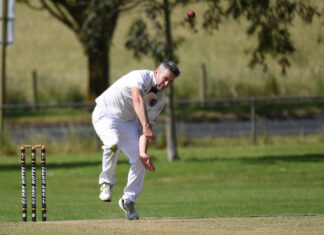WHEN city council embarked on two major infrastructure projects such as the Mount Gambier Library and Main Corner, little was said about running costs.
The $11.3m library was originally costed at $3.5m while the Main Corner benefitted from a $5m Federal Government grant but costs rose significantly during construction before levelling out at about $10m.
From that time onwards, running costs and paying off the debt for both projects was something ratepayers soon became very aware of, simply because rates jumped by 6pc or more each year until a couple of years ago.
It made it extremely difficult for people with tight budgets, large mortgages or those on fixed welfare payments.
During that time most people were so focused on the continual escalation of the library’s building costs they forgot about what it was going to cost them to run it.
It should be a reality check for ratepayers regarding the proposed $40m indoor sports centre.
After the first year of the library’s operation it soon became apparent how much running costs impacted on council’s budget and the effect it would have for ratepayers.
From an initial projection of $650,000/year to run the library it blew out to $1m in the first year and to $2m after four years.
Today, many do not realise that even with rates at 4.5pc this includes $142.85 (average) for every ratepayer, every year to pay library running costs – do the math – 14,000 rateable property owners share the $2m/year cost.
It was this ongoing cost that made ratepayers and councillors wary when an indoor pool was first mooted and why city council instructed CEO Mark McShane to investigate building and running costs.
Later, when the current indoor sports centre concept gathered momentum council was in a better position to borrow money but also look at how it could fund this with federal and state government help.
The one sticking point was running costs.
The original estimate to build the facility was $25m but this ballooned out to $40m after it was decided to have six courts rather than the original four.
At the same time, the estimated running costs were said to be $1.5m or $100 per ratepayer per year, whether this changes will be determined by what type of user-pay scheme is introduced.
Mayor Andrew Lee believes by staggering a flat payment of $20-$25/ratepayer/year for the first four to five years it will provide council a cash stockpile to help offset first year running costs.
Then, this $1.5m cost will be absorbed into normal rates, and just like the library it becomes a hidden cost.
Mr Lee makes it sound like the running cost figure suddenly disappears although perhaps optimistically he and council are confident a user-pay scheme will eliminate any cost for ratepayers.
The question is will sports, such as basketball and netball, which virtually pay nothing for current sport facilities, be willing to suddenly pay their share of $1.5m/year to use the new complex?
That is the serious question for council – most know the answer.
The unknown factor is what rates will be in five years.
It might be 4.5pc, the same as last year, it might also be 6pc, but either way whether it remains the same or goes up ratepayers are paying for the centre in their rates.
What some ratepayers are now arguing is they have had to suffer paying 6pc for a number of years and because much of the debt has been repaid why isn’t there rate relief, or in other words, why are not rates dropping?
How much the sporting fraternity is prepared to pay under a user-pay scheme will be crucial but the $40m indoor centre has lost some appeal because the cost is disproportionate to funding given to other more needy community groups.
It is morally and economically wrong for politicians and some councillors to unfairly put sport ahead of these groups by spending $40m of taxpayers/ratepayers’ money and then “double-dip” by asking ratepayers to pay $1.5m/year in running costs.
Other community groups would love a deal like that.





